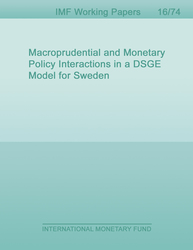
Macroprudential and Monetary Policy Interactions in a DSGE Model for Sweden
We analyse the effects of macroprudential and monetary policies and their interactions using an estimated dynamic stochastic general equilibrium (DSGE) model tailored to Sweden. Households face a ceiling on their loan-to-value ratio and must amortize their mortgages. The government grants mortgage interest payment deductions. Lending rates are affected by mortgage risk weights. We find that demand-side macroprudential measures are more effective in curbing household debt ratios than monetary policy, and they are less costly in terms of foregone consumption. A tighter macroprudential stance is also found to be welfare improving, by promoting lower consumption volatility in response to shocks, especially when using a combination of macroprudential instruments.
Publication date: March 2016
ISBN: 9781475546545
$18.00
Add to Cart by clicking price of the language and format you'd like to purchase
Available Languages and Formats
| English |
Prices in red indicate formats that are not yet available but are forthcoming.
Topics covered in this book
This title contains information about the following subjects.
Click on a subject if you would like to see other titles with the same subjects.
Economics- Macroeconomics , Economics- Macroeconomics , Economics / General , Economics / General , International - Economics , International - Economics , Macroprudential Policies , Monetary Policy , Collateral Constraints
Summary
Copyright © 2010 - 2025
Powered by:
AIDC



